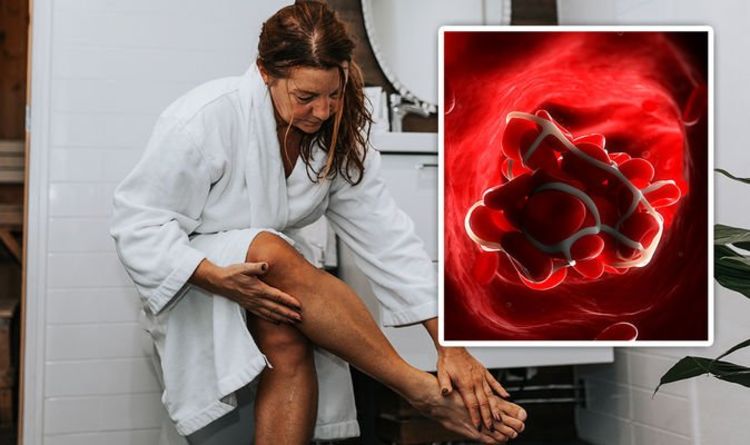Blood clots: Four skin changes in the arms and legs that are warning signs
Doctor explains symptoms of deep vein thrombosis
We use your sign-up to provide content in ways you’ve consented to and to improve our understanding of you. This may include adverts from us and 3rd parties based on our understanding. You can unsubscribe at any time. More info
DVT is more likely to occur in people over the age of 60, those who are overweight and smoke, and have developed varicose veins. However, everybody is still at risk. Experts at the National Blood Clot Alliance pointed out the signs and symptoms of the condition. For instance, the skin – on either the legs or arms – may turn red or become discoloured in some way.
Another possible indication of the blood clot is when the skin becomes “warm to the touch”.
The skin may also appear stretched, as swelling occurs in the affected limb.
Moreover, the skin can become sensitive, with pain or tenderness developing without an obvious cause, such as an injury.
Four skin changes in the arms and legs warning of DVT:
- Swelling
- Warm skin
- Red or discoloured skin
- Pain or tenderness.

“Contact your doctor as soon as you can if you have any of these symptoms, because you may need treatment right away,” the charity advised.
However, the NHS warned that symptoms of DVT should be attended to “as soon as possible”.
Thus, if you notice any signs of DVT, the national health service recommends asking for an “urgent GP appointment” or to call 111.
If signs of DVT are combined with chest pain or breathlessness, “call 999 or go to A&E”.
If DVT is suspected, you will be referred to a hospital within 24 hours.
There, a scan will reveal whether or not blood is flowing normally through the vein.
Treatment might involve an injection of an anticoagulant (blood thinning) medicine called heparin.
Other blood-thinning medications might be offered, such as warfarin and rivaroxaban.

After hospital treatment, you will be encouraged to walk regularly and to keep your affected leg (if applicable) raised when resting.
Can the risk of DVT be minimised?
In order to lower your risk of DVT, you need to maintain a healthy weight.
Regular bouts of activity will also help, as staying active can encourage blood flow.
Moreover, you will need to drink plenty of fluids to remain hydrated.

It is also advisable not to sit still for long periods of time.
This may be challenging when working from home, but for your own health, the NHS recommends getting up and moving around every hour or so.
Moreover, it is best to refrain from sitting with your legs crossed as this can restrict blood flow.
In order to help prevent blood clots, it is also important to not be a smoker.
Source: Read Full Article



